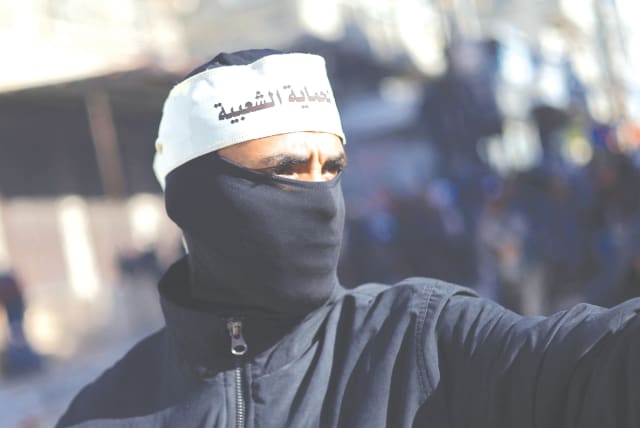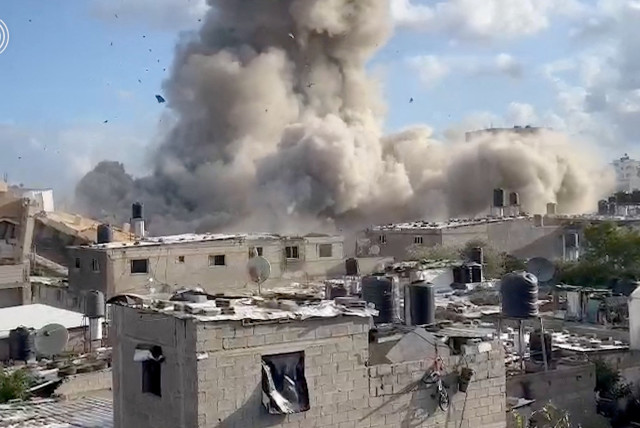IDF's Shifa Hospital raid: Why Israel is fighting the war it should've fought years ago - analysis

To further understand Hamas's return to Shifa Hospital, it is imperative to understand that these terrorists are more like aging members of a mafia than aging terrorists.
The IDF raid on Shifa, beginning on March 18, has led to the arrest of hundreds of terrorists and the killing of around 200 in clashes and gun battles. The terrorists shifted back to Shifa Hospital over the last several months, probably assuming that the hospital compound would be safe from a second Israeli raid after Israel had secured and cleared the area in November.
However, the second Shifa raid has two sides to it. On the one hand, tactically, it was a great success. On the other hand, some were older, ones who had been let out in the past and should have been arrested or eliminated years ago. So, in a way, the raid also sets a low bar on the kinds of terrorists that are being eliminated. The raid tells us more about our failures in not defeating Hamas in the past than it might tell us about the defeat of Hamas today.
One of them was Faid Dewik, a senior operative in Hamas’s intelligence unit who carried out a shooting attack in 2002, killing four people. He was imprisoned and then released in the Schalit deal in 2011. This man was involved in plotting attacks in the West Bank. At Shifa, he fled to the maternity wing, where he was eventually eliminated. Zakariya Najeeb was with him, another operative who focused on West Bank operations for Hamas and was involved in the kidnapping and killing of IDF soldier Nachshon Wachsman in 1994. He too was released in the Schalit deal.
Out of the terrorists captured or killed in Gaza, some were already detained in the past, and Israel has had the chance to eliminate them. In essence, then, what we are witnessing is part of the toxic relationship between Israel and Hamas that is two decades old. In this narrative, Hamas was able to survive and thrive by getting terrorists released. Israel would then arrest them or fight them again.
Dewik and Najeeb had a long history of crimes and terrorism. We need to think of these men more like aging members of a mafia than aging terrorists. Hamas crimes began in the 1980s when these men were younger. Hamas began its murder spree by recruiting young thuggish men. The men engaged in the murder of Palestinians whom they accused of “collaboration” with Israel.
The Hamas leadership, and men like Dewik or Najeeb, graduated from one crime to another; murder, kidnapping, or plotting attacks were part of their expertise. After being arrested and released in 2011, they returned to work for Hamas, which shows how Hamas grew from a small thuggish group to one that is sophisticated enough to commit bus bombings in the 1990s, and eventually a terror army that took over Gaza in 2007. At each step of the way, Hamas was empowered by international organizations that gave it cover, and eventually, countries in the region that hosted and backed it.
For veteran, aging terrorists like Dewik or Najeeb, they had seemingly endless privileges with no consequences. Wars came and went; they got used to the privilege of seeing Israel “manage” the conflict. So, they would have assumed that October 7 would be just another round of fighting.
Who were these terrorists?
THEY LIKELY assumed that massacring the most Jews since the Holocaust wouldn’t lead to much more of an escalation than in the past. This is because Hamas is hosted and backed by two Western allies in the region, and enjoys backing from Tehran and contacts in Moscow and Beijing.
The terrorists who moved to Shifa would have believed they were safe. They had likely even been at Shifa in the past. They were also used to Israel’s method of fighting in Gaza, where it would warn areas ahead of time before incursions. These older men also would have worn plain clothes, appearing like affable civilians on the street, out to buy fruit for their grandchildren. These are the key elements of Hamas’s survival: Using hospitals to hide behind civilians, hiding in tunnels, dressing in civilian clothes, receiving support from abroad, and connections with international organizations.
These men at Shifa would have looked like aging mafia members gathering for a meeting. Like aging mafia members, they wouldn’t have all been armed. But just like in the movies when the authorities every once in a while bust a huge group, they saw their luck run out on the morning of March 18, when they would have been shaken awake by their friends and told that there was the rumbling of armored vehicles outside. Caught by surprise, these men did the only thing they knew to do, hide behind civilians by running to the maternity wing.
They probably thought that they would get one more reprieve; after all, hiding in a maternity ward would be a good way to get international attention from Israel supposedly “attacking a hospital.”
In the end though, the 30 years of terror these men embodied ended in Gaza. It is an accomplishment to have tracked them down, but the fact that they were already released once illustrates the challenge of the Gaza operation. Israel not only has to round up and deal with all the terrorists who have had the privilege to massacre Israelis and then get released and massacre more Israelis, but Israel also has to defeat the next generation of young Hamas members.
The fact is that the aging terrorists in Shifa are not those who carried out October 7. It was younger men on motorcycles who massacred Israelis, kidnapped, raped, and burned. They felt impunity to do that, and the crowds who turned out in Gaza to celebrate them were young men.
They felt impunity to do this to Israel because they were told Israel is a paper tiger and they were likely told that Hamas has friends in high places, including the two Western allies that host it.
The fact that Hamas leader Ismail Haniyeh flew to Iran last week illustrates how Iran’s leadership jets around the region, while Israeli leaders do not. Defeating Hamas will require defeating its battalions in Rafah and ending this impunity and privilege.
So far, Israel has degraded Hamas’s capabilities, but it has also had to spend a lot of time eliminating men whom it already detained years ago. In essence, Israel is fighting and defeating the Hamas it should have defeated decades ago. The question is whether it will learn this lesson, or let Hamas be empowered once again, and risk the lives of hundreds, thousands, or millions of Israelis in the future.
Jerusalem Post Store
`; document.getElementById("linkPremium").innerHTML = cont; var divWithLink = document.getElementById("premium-link"); if (divWithLink !== null && divWithLink !== 'undefined') { divWithLink.style.border = "solid 1px #cb0f3e"; divWithLink.style.textAlign = "center"; divWithLink.style.marginBottom = "15px"; divWithLink.style.marginTop = "15px"; divWithLink.style.width = "100%"; divWithLink.style.backgroundColor = "#122952"; divWithLink.style.color = "#ffffff"; divWithLink.style.lineHeight = "1.5"; } } (function (v, i) { });

